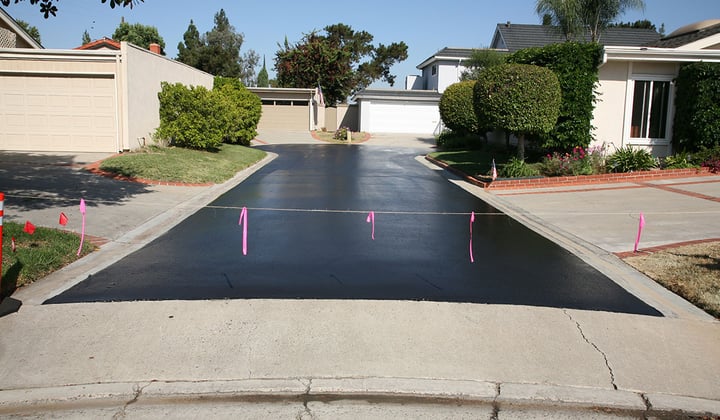Cold Mix Asphalt Vs. Hot Mix Asphalt: Which Is Right for You?

Structure Distinctions
Cold mix asphalt is produced by emulsifying the asphalt binder with water and an emulsifying agent prior to mixing it with accumulation. The hot mix asphalt manufacturing process entails warming the accumulation and asphalt binder individually before integrating them at the asphalt plant.
Additionally, cold mix asphalt tends to be less dense and extra flexible than warm mix asphalt. This versatility makes it much better fit for areas with higher levels of movement, such as driveways or roads with rush hour. In comparison, hot mix asphalt is known for its high longevity and resistance to rutting and splitting, making it a preferred selection for freeways and high-traffic roadways where longevity is critical.
Installation Refine Differences
The procedure of mounting chilly mix and hot mix asphalt shows significant variations in their treatments and needs. In comparison, hot mix asphalt demands a more intricate installation process. Due to the heating requirements, warm mix asphalt installments are usually brought out by professionals with customized tools, ensuring a more structurally sound and long-term result.
Toughness and Longevity Elements
When considering asphalt alternatives, longevity and longevity are vital factors to review for lasting pavement efficiency. Hot mix asphalt (HMA) is known for its exceptional sturdiness and long life. The heats during the laying and blending procedure permit far better compaction, causing a denser and stronger pavement framework. This causes HMA being more immune to hefty web traffic loads, rough weather, and the effects of aging contrasted to chilly mix asphalt (CMA)
In terms of long life, HMA commonly outperforms CMA because of its exceptional toughness and resistance properties. HMA sidewalks have a longer life span, requiring much less frequent fixings and upkeep, which can equate to cost financial savings in the long run. In addition, HMA pavements are more conveniently customizable to fulfill specific job requirements, even more enhancing their sturdiness.
Price Factors To Consider
Thinking about the economic implications is an essential element when evaluating the option in between hot mix asphalt (HMA) and cold mix asphalt (CMA) for pavement jobs. While the first expense of warm mix asphalt is normally greater than that of cool mix asphalt, HMA commonly offers an extra cost-effective option in the future as a result of its exceptional longevity and longevity. HMA is recognized for its capacity to endure heavy web traffic lots and extreme weather, minimizing the demand for frequent repair services and upkeep. On the various other hand, cold mix asphalt is much more cost effective upfront however may need even more frequent patching and resurfacing, causing greater upkeep expenses gradually.
In addition to product expenses, it's necessary to consider the expenditures associated with setup and maintenance when contrasting HMA and CMA. Ultimately, the choice in between HMA and CMA ought to take right into account not simply the initial expense yet also the long-lasting economic effects to identify the most cost-efficient choice for the details pavement job.
Environmental Influence Comparison
Contrast of the ecological influences in between hot mix asphalt (HMA) and cold mix asphalt (CMA) reveals distinct differences in sustainability techniques. HMA production needs high temperatures, leading to boosted power consumption and greenhouse gas emissions.
In addition, useful source the usage of CMA frequently involves recycling existing asphalt pavement, promoting source conservation and reducing the quantity of try this site waste sent out to garbage dumps. By opting for CMA over HMA, roadway construction tasks can contribute favorably to ecological conservation initiatives.
Conclusion
Finally, the selection between chilly mix asphalt (CMA) and warm mix asphalt (HMA) depends on different variables such as composition, installment process, toughness, longevity, expense, and ecological effect. cold mix asphalt. While CMA uses a fast and affordable solution for minor fixings, HMA ensures exceptional toughness and longevity for rush hour locations. Take into consideration these aspects carefully to identify which sort of asphalt is the appropriate selection for your paving requires

Taking into consideration the monetary effects is an essential facet when assessing the selection between go now hot mix asphalt (HMA) and cold mix asphalt (CMA) for sidewalk projects. While the preliminary price of warm mix asphalt is usually higher than that of cool mix asphalt, HMA frequently supplies an extra cost-effective solution in the lengthy run due to its exceptional sturdiness and longevity. angle parking.Contrast of the ecological impacts between warm mix asphalt (HMA) and chilly mix asphalt (CMA) discloses distinctive distinctions in sustainability practices.In verdict, the choice between cold mix asphalt (CMA) and hot mix asphalt (HMA) depends on different elements such as make-up, installation process, sturdiness, durability, price, and environmental effect